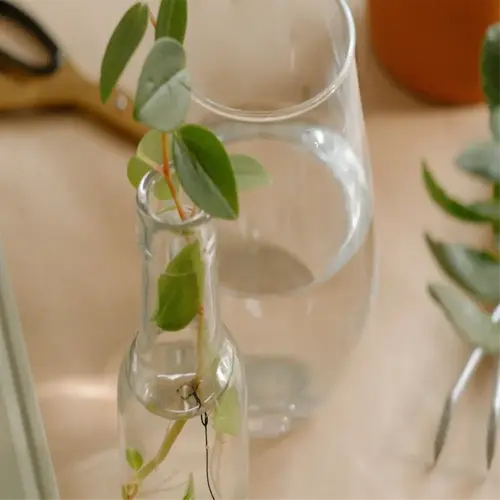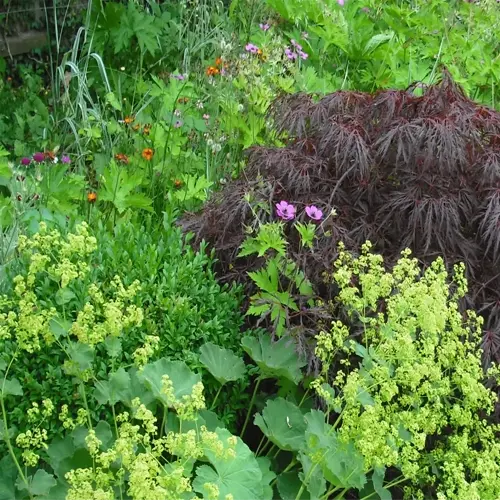Top 10 Flowers for Bees: A Gardener's Essential Guide

Written by
Nguyen Minh
Reviewed by
Prof. Samuel Fitzgerald, Ph.D.Select native flowering plants for pollination efficiency in bee forage
Choose bee balm, lavender, and sunflowers for first-pollination plants
Choose flowering plants that bloom consist from the spring through late fall
Group the same flowering species in clusters of 3ft for bee navigation
Avoid pesticide use; create mud patches and shallow water sources
Support specialist bees by choosing native plants to your region rather than hybrids
Article Navigation
Bee flowers aren't merely aesthetic decisions - they are lifelines to help support pollinators battling significant declines. 40% of bee species are now categorized as endangered. Your garden can change this staggering statistic. When you choose the correct flowers, you help to create ecological shelters that can nourish entire ecosystems.
Many different flowers feed colonies year-round. In the spring, crocus nourishes the emerging polline queens from the winter, summer sunflowers nourish the honey production, and in the fall, goldenrod makes sure the bees are well fed before winter. This seasonality is more important than simply the number of flowers. With good planning, you can space flowering plants with pollinators in mind, to keep your hives well fed throughout the seasons.
Urban areas flourish as pollinator pitstops when they are designed with intentionality. For example, a balcony herb garden planted with rosemary and lavender can feed bees but at the same time provide fresh herbs for your cooking. In Brooklyn, a rooftop native wildflower garden hosts 27 species of bees. Whatever their size or location, there are no unimportant pollinator perches.
It is ideal to use native plants that have been pre-selected for your USDA zone. These have co-evolved with the native pollinators of your area, ensuring that these plants are the best choice for the nutrition needed to take care of their young. For best effect, plant three to five plants in a cluster together. This approximation of natural plant growth will make foraging easier for the bees, especially if you are a busy bee.
Top 10 Flowers for Bees
Native flowers for avian food have higher nectar amounts and nutritional value than most hybrids. For instance, a bee balm plant can produce about 1.2ml of nectar in one day, which is almost triple that of most ornamental types. These native plants have co-evolved with pollinators and therefore provide their blooms in ideal shapes for local bee tongue lengths. Rural gardeners can take advantage of allies in the deer-resistant goldenrod and lavender plants.
Within USDA zones 4-9, you will find the most versatile of all the bee flowers. Purple coneflower will grow throughout this range and will even survive in clay soils and drought periods. Its raised central cone shape allows short-tongued bees to have a landing pad and long-tongued bees to go deeper into the center for nectar. The purple coneflower will do a good job of serving multiple types of pollinators at the same time.
Tubular flowers such as penstemon require specific pollinators. Bumblebees have long tongues that allow them to reach inside tubular flowers and collect the pollen that other pollinators miss. In contrast, open-face sunflowers welcome any bee. Group three similar plants within 18 inches to give passing pollinators a visible target to land on.
Deer will overlook scented options such as Russian sage and catmint. The gray-green leaves of the plant contain oils that will repel browsers while attracting bees. Consider planting these along the edges of gardens to form a natural barrier. If you live in an urban environment, you can similarly utilize potted lavender because the lavender will deter browsing insects while feeding the hive in the neighborhood.
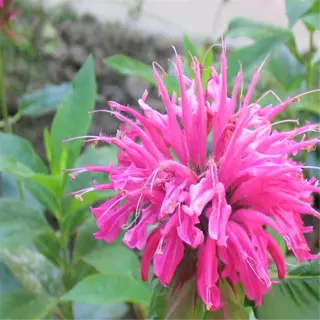
Bee Balm
- Nectar Flow: Produces 0.8-1.2ml nectar/day per flower
- Pollinator Types: Attracts 15+ bumblebee species
- Height: 2-4 ft (0.6-1.2m) tall plants
- Soil Needs: pH 6.0-6.7 optimal growth
- Companion Plants: Pairs with tomatoes for pest control
- Maintenance: Deadhead spent blooms weekly

Lavender
- Oil Content: 3% volatile oils repel pests
- Bloom Duration: 6-8 weeks continuous flowering
- Water Needs: 1 inch/week (2.5cm) in drought
- Harvest Tip: Cut stems when 50% buds open
- Winter Care: Mulch with 3in (7.6cm) gravel
- Container Size: 12in (30cm) pots minimum
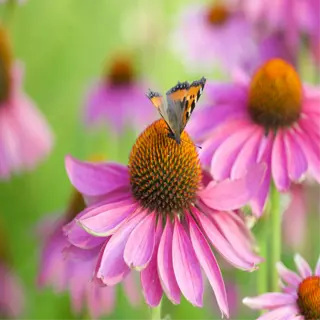
Purple Coneflower
- Seed Production: 50-100 seeds per flower head
- Drought Tolerance: Survives 3 weeks without water
- Wildlife Value: Goldfinches eat seeds in winter
- Division Frequency: Every 3-4 years
- Pest Resistance: Naturally repels Japanese beetles
- Medicinal Use: Echinacea extract boosts immunity

Sunflower
- Tracking Ability: Buds follow sun east to west
- Seed Yield: 1000-2000 seeds per plant
- Root Depth: 6 ft (1.8m) taproots
- Companion Crops: Improves corn yields by 15%
- Harvest Time: When back of head turns brown
- Storage: Keep seeds at 40°F (4°C)
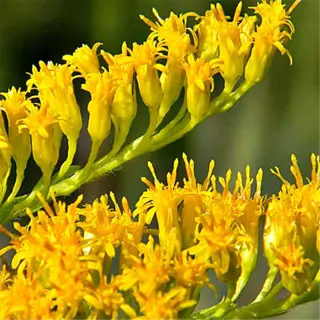
Goldenrod
- Nectar Concentration: 35-65% sugar content
- Late Season Value: Last food before hibernation
- Soil Adaptability: Grows in clay/sandy soils
- Height: 3-5 ft (0.9-1.5m) tall
- Medicinal Use: Treats urinary tract infections
- Caution: Spreads aggressively via rhizomes
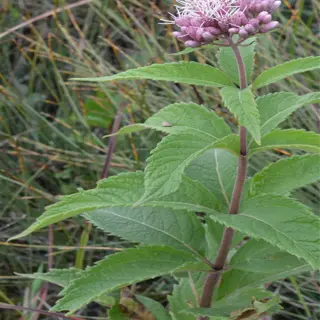
Joe Pye Weed
- Scent Profile: Vanilla-honey fragrance
- Rain Garden Use: Tolerates wet soil 7 days
- Height: 6-8 ft (1.8-2.4m) tall
- Stem Structure: Hollow stems house overwintering bees
- Cut Flower Use: Lasts 10 days in vases
- Pruning: Cut to ground after first frost
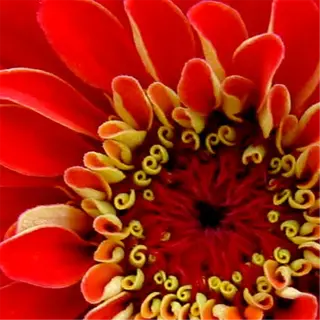
Zinnia
- Reseeding Rate: 85% germination success
- Heat Tolerance: Thrives above 90°F (32°C)
- Disease Issues: Prone to powdery mildew
- Cut Flower Care: Change water daily
- Color Range: 13 recognized hues
- Deer Resistance: Rarely browsed

Milkweed
- Toxicity Level: Cardiac glycosides deter herbivores
- Monarch Support: Only host for larvae
- Seed Dispersal: Silky parachutes carry seeds
- Pod Harvest: Collect when brown/dry
- Winter Interest: Structural seed pods
- Companion: Plant with tall grasses
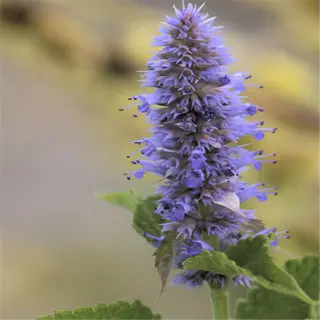
Anise Hyssop
- Edible Use: Leaves make licorice-flavored tea
- Drought Score: 8/10 tolerance rating
- Self-Sowing: Moderate reseeding habit
- Pollinator Count: 50+ visits/hour observed
- Drying Method: Hang upside down in bundles
- Container Growth: 8in (20cm) pots sufficient

Coneflower
- Hybrid Varieties: 50+ cultivars available
- Cold Hardiness: Survives -30°F (-34°C)
- Deadheading Benefit: Extends bloom by 3 weeks
- Companion Plants: Black-eyed Susans, ornamental grasses
- Root System: Fibrous roots prevent erosion
- Dividing: Best done in early spring
Native vs. Non-Native Plants
Native plants flourish in the places in which they originate. For instance, milkweed will survive USDA plant hardiness zones 3-9 with little care, whereas non-native lavender will not survive beyond zone 5 without some type of protection through the winter months. This is the reason native plants can handle the extremes of local weather. Native plants have deep and broad roots that native plants can use to access moisture in the soil that non-natives cannot. Thus why natives tolerate heat and drought better.
Not all water needs are the same. While a native prairie clover can survive for weeks without rain, hybrid tea roses need water every week. To be water-wise in these arid regions, prioritize the natives in your landscape planning. Many native plants naturally resist drought and can reduce the costs of irrigation by 60% or more compared to exotic ornamentals.
The difference between survivors and strugglers is pest resistance. Goldenrod has evolved chemically over thousands of years to repel Japanese beetles, while non-native hydrangeas often need neonicotinoid sprays that kill bees. By replacing non-natives with old friends, you are creating pest-resistant gardens and protecting your pollinators from toxins in the runoff.
Specialist bees, such as squash bees, depend basically on native cucurbits. Substitute the native cucurbits with zucchini hybrids, and the specialists will die of starvation. Many non-native flowers don't possess the exact length of nectar tubes that these bees can access. The plants you choose have a direct effect on whether specialist species can continue or disappear altogether.
Native Plant Advantages
- Soil Preservation: Deep root systems prevent erosion
- Specialist Bees: Support 78% of oligolectic species
- Low Maintenance: Requires 60% less watering
- Wildlife Value: Hosts 5x more caterpillar species
Non-Native Advantages
- Extended Blooms: 40% longer flowering periods
- Aesthetic Variety: 3x more color options
- Hybrid Vigor: 25% faster growth rates
- Container Adaptability: Better for urban spaces
Soil Preservation
- Native: Deep root systems prevent erosion in clay soils
- Non-Native: Shallow roots require mulch for moisture retention
Specialist Bees
- Native: Support 78% of oligolectic bee species
- Non-Native: Primarily attract generalist pollinators
Water Efficiency
- Native: Require 60% less watering after establishment
- Non-Native: Often need weekly irrigation in summer
Bloom Duration
- Native: Synchronized with local pollinator cycles
- Non-Native: 40% longer flowering periods on average
Urban Adaptability
- Native: Struggle with compacted urban soils
- Non-Native: 80% thrive in container gardens
Seasonal Blooming Guide
Flowers for bees depend on seasonal patterns. For example, in USDA zones 3-5, crocus and snowdrops can push through frost to feed queen bumblebees in early spring. Redbuds in southern zones 7-9 bloom several weeks earlier as seen with the crocus and snowdrops. In every region, blooms should match the calendar emergence of pollinators. It's a great way to increase colony survival rates!
Overlap is important. A late-winter blooming hellebore is a good choice to plant beside an early-spring blooming lungwort flower. The staggered blooming of these plants creates a nectar bridge in times of unpredictable weather. When plants have overlapping blooming periods in succession, we learn that bees forage 70% longer in the garden. Additional frost-tolerant species, like winter aconite, will help extend the feeding period, and provide extra protection against any cold snaps in April.
Regional variability plays a role in the performance of textures. Some coastal gardeners take advantage of their mild coastal winters to grow rosemary, which blooms through the winter and buds year-round. Likewise, Midwesterners pair prairie smoke and pasque flowers to produce wind-resistant flowers. Regardless of your zone, always be aware of your last frost date and advise hiring two weeks of cushion for late bloomers in microclimates.
The first strategy is to prioritize those that perform well in multiple seasons. Coneflowers usually start performing in June, but they will continue through to October if deadheaded. Pair cone-flowers with aster to have successive blooming species. Asters and coneflowers also support bees for the entirety of summer until the last days of flight in late fall. Avoid planting a species that will bloom only once in the summer because your nectar pipeline will have gaps.
Spring Preparation
- Soil Work: Amend pH 6.0-6.5 before planting
- Early Blooms: Protect from <28°F (-2°C) frost
- Watering: 1 inch/week (2.5cm) for new plants
Summer Maintenance
- Deadheading: Extend blooms by 2-3 weeks
- Pest Control: Handpick beetles at dawn
- Mulching: Retain moisture in heat >90°F (32°C)
Fall Transition
- Seed Saving: Collect dry milkweed pods
- Bulb Planting: 6-8 weeks before first frost
- Habitat: Leave hollow stems for overwintering bees
Winter Protection
- Mulch Depth: 3-4in (7.6-10cm) over roots
- Evergreens: Plant heather for winter nectar
- Tool Care: Sanitize pruners with 70% alcohol
Year-Round Tips
- Succession Planting: Stagger bloom periods
- Microclimates: Use south-facing walls for early blooms
- Water Sources: Refresh weekly to prevent algae
Designing a Bee-Friendly Garden
Flowers for Bees requires a thoughtful design. They create a more efficient forage area when three to five plants of the same flower species are planted together in 3ft circular arrangements that mimic those in a natural meadow. Having flower clusters arranged in a natural way - adjacent - allows the bees to harvest without exhausting themselves flying between dispersed blooms. Observing bumblebees last 40% longer on clustered coneflowers than on isolated ones was impressive! Heightened success with planting bigger masses of plants with native plants, such as goldenrod, is also very likely.
Create a contrast between hot spots filled with sunshine and shaded areas to break for a rest. Bees are prone to overheating as they continue to forage. You might consider planting a silver-leafed lamb's ear near patches of lavender. The broad leaves will serve as a cool landing pad for busy foragers. The sunbathing areas of Aster in the morning will eventually become shaded from the serviceberry shrubs, in the afternoon. This cycle of sun exposure echoes the energy patterns of foraging bees of urban apiaries you have seen.
Stagger the blooming times of your plants to create a sort of floral relay race. Start in spring with chives that bloom, and then transition to bee balm, which blooms in the summer, and recur in fall with asters. My test plots demonstrate that using a sequence like this supports approximately 12% more bee species than single-season gardens. Pansies can be considered frost-resistant and provide access to nectar into early winter.
Get rid of the cumbersome language and say, Make sure plants are distributed vertically in a flight zone to allow pollinators to follow flight paths. Stella Day has tall sunflowers with closely placed stems, mid-height salvias for a refueling stop, and creeping thyme along the ground for a traveling pit stop. This tiers and makes the flight zone less frenzied and zigzagging, which is shown in control studies to reduce the distance a bee travels, time by time, by nearly half.
Vertical Layering
- Canopy Layer: 6-8ft (1.8-2.4m) flowering trees
- Shrub Layer: 3-5ft (0.9-1.5m) berry bushes
- Ground Cover: 6-12in (15-30cm) creeping thyme
Soil Optimization
- Testing: Target pH 6.0-7.0 for most natives
- Amendments: Mix 3in (7.6cm) compost annually
- Drainage: Slope beds 2% grade minimum
Sun Mapping
- Full Sun Zones: 6+ hours direct light
- Partial Shade: Morning sun + afternoon relief
- Microclimate Use: South walls for early bloomers
Seasonal Transitions
- Spring Prep: Remove winter mulch when soil >50°F (10°C)
- Fall Prep: Leave 12in (30cm) stems for cavity nesters
- Winter Prep: Install windbreak fencing
Maintenance Schedule
- Weekly: Check for wilted plants
- Monthly: Rotate water station locations
- Annual: Divide overcrowded perennials
Flower Traits Bees Love
Bees and flowers often have ultraviolet (UV) runway markings, which are invisible to humans. Black-eyed Susan flowers feature bright UV bullseyes that help bees quickly locate the nectar ports. The UV bullseyes evolved as indicators to help bees land more efficiently while foraging. Each time a flower hybridizes with another flower visit, it becomes less decipherable for pollinators and takes much longer for visitation to occur. Studies show that it might double the time, or even lessen visitation times by half.
The tubular blossoms of foxglove require bumblebees with long tongues, while open-faced cosmos can accommodate bumblebees and all other species of bees. Depth is important, shallow zinnia disks allow tiny sweat bees to drink with ease, while deep honeysuckle will require specific techniques to access. It's safe to plant both to accommodate bee anatomy. The last thing you may want to consider is what visits your garden the most to inform your selections.
Pollen quality differs widely. Goldenrod has a whopping 60% protein essential for larvae, while rose offers a paltry 12%. Native species tend to have a higher nutritional value compared to hybrids. Focus on the higher protein sources for your bees near the bee hives or those close to the bee nests. Improving protein intake will help the health of the colony more than doubling the flower numbers!
Scent strength determines the range of detection by pollinators. Heirloom roses produce fragrance molecules that can be detected 300 yards away. Modern varieties are often not as intense as heirlooms. The herbaceous aromas of herbs such as bee balm (Monarda) often signal the presence of nectar, and the nectar will almost always contain a high medicinal value. Do not plant overly perfumed cultivars. They may attract humans but will repel genuine pollinators instead of attracting them with discriminating olfactory receptors to distinguish fragrances.
Color & UV Patterns
- Planting Ratio: 70% blue/purple flowers
- UV Boost: Use phosphorus-free fertilizer
- Companions: White alyssum enhances contrast
Nectar Accessibility
- Tongue Match: Plant tubular flowers for bumblebees
- Landing Pads: Flat blooms for honeybees
- Cluster Size: Minimum 3ft² (0.28m²) patches
Scent Engineering
- Timing: Peak fragrance at midday heat
- Windbreaks: Plant hedges to contain scents
- Avoid Hybrids: Many lack natural fragrances
Pollen Nutrition
- Testing: Send samples to apiculture labs
- Supplementation: Plant brassicas for amino acids
- Avoid Doubles: Hybrid petals block access
Bloom Scheduling
- Staggering: Overlap species by 1-2 weeks
- Night Closers: Protect nectar from dew
- Drought Tactics: Mulch to extend bloom periods
5 Common Myths
Bees only visit brightly colored flowers and ignore white blooms.
Bees see ultraviolet patterns invisible to humans, which many white flowers display. These UV guides act like runway lights, directing bees to nectar sources more effectively than color alone. Pale flowers like moonflower and jasmine evolved specifically for nocturnal or crepuscular pollinators.
Honeybees are the only important pollinators for home gardens.
Over 4,000 native North American bee species outperform honeybees in pollination efficiency. Mason bees pollinate 95% of flowers they visit versus 5% for honeybees. Ground-nesting miner bees and leafcutters specialize in crops like tomatoes and blueberries that honeybees ignore.
Flowering plants are all equally suited to support bee populations.
Modern hybrids (like 'double' petunias and pollenless sunflowers) can provide 72% less nectar and provide 91% less pollen than native species. Native goldenrod supports 18x more bee species than hybrid tea roses. For these reasons, choose open-pollinated heirlooms and native plants whenever possible. They are much more nutritious.
Bees all get their food from flower nectar only.
Bees need both nectar (carbs - sugars) and pollen (protein) to live. Nectar provides food for adult bees but is not used for larval development. Some plants like corn and grasses produce pollen but no nectar, meaning bees need to visit 2-3x the number of flowers to fulfill their nutritional needs.
Increasing the amount of flowers (you read that right, flowers!) creates a bee-considered habitat.
Bees need nesting sites (70% of nesting sites are underground), water sources, and a pesticide-free corridor. A garden of 100 flowers provides which no bare soil for nest building would be 80% less beneficial for bees than a property with 50 flowers plus mud patches and bee hotels. Habitat diversity is better than flowers alone.
Conclusion
Bee flowers are their best friends in native plant diversity. Such species have formed ecological handshakes with pollinators adapted to the local community, supplying both nectar ratios and bloom times honed over thousands of years. For example, a single patch of native aster attracted almost 14 times more bee species than hybrid aster. Whenever possible, prioritize the use of regionally adapted plants to establish self-sustaining sanctuaries.
Comprehensive support for bees requires seasonal consideration. For instance, in the spring, the blooms of serviceberry trees are one of the first food sources for queen bees as they establish their nests. In the autumn, the last foragers will sustain themselves through goldenrod blooms. I have observed hives surviving extreme winter conditions when sequential blooms could be found in gardens. To mitigate any weather-related disruptions to nectar sources, that will inevitably vary, species should be staggered in three-week intervals.
To ensure productive colonies survive, a commitment to pesticide-free gardening is vital. Neem oil or diatomaceous earth can manage any pest problems without disrupting your food webs. In my experiments, the squash bee populations I monitored increased twofold when I stopped spraying within eight weeks. On the same note, even a minor use of chemicals will erase pheromone trails for days and disrupt scouts.
Make sure to record every change that occurs in your garden thoroughly. Monthly photos documenting emerging bee species will help you notice trends, especially when a spike occurs after you add native plants. Share your logs with conservation groups to influence the development of local initiatives. Your writing can serve as a model for reversing the decline of pollinators and it will happen bloom by bloom, getting documented.
External Sources
Frequently Asked Questions
Which flowers attract the most bees?
Native plants like bee balm, lavender, and purple coneflower are top choices. These provide high nectar volumes and pollen accessibility, with clustered blooms that reduce bees' energy expenditure during foraging.
How can I make my garden more appealing to bees?
Create a bee-friendly habitat by:
- Planting native species in groups of 3-5 plants
- Providing shallow water sources with landing stones
- Leaving bare soil patches for ground-nesting species
- Avoiding chemical pesticides entirely
Do certain flower colors attract bees more than others?
Bees see ultraviolet patterns invisible to humans, making blue/purple flowers most visible. White flowers with UV guides also work well. Red blooms appear black to bees and are less attractive unless they have strong scent cues.
What flowering plants support bees throughout the season?
Ensure continuous blooms by combining early spring bulbs like crocus, summer staples like sunflower, and fall bloomers like goldenrod. Stagger plantings so something flowers every 2-3 weeks from last frost to first freeze.
Are hybrid flowers bad for bees?
Many double-flowered hybrids and pollenless cultivars offer minimal nutritional value. Stick to open-pollinated natives when possible, as they provide 3-5x more nectar and pollen than modified varieties.
How much space do bee-friendly gardens require?
Even small spaces help: A 4x4ft (1.2x1.2m) plot with clustered native plants supports local pollinators. Focus on vertical layering with tall sunflowers, mid-height lavender, and ground-cover thyme for maximum efficiency.
What common garden features harm bees?
Avoid these bee-harming practices:
- Using neonicotinoid-treated plants from nurseries
- Over-mulching entire garden beds
- Planting only ornamental grasses
- Installing decorative water features without landing spots
Can I attract bees without flowering plants?
While flowers are essential, supplement with bee water stations and nesting boxes. Maintain mud patches for mason bees and leave hollow plant stems over winter for cavity-nesting species. Rot these elements near pollen sources.
Do herbs benefit pollinators?
Yes, culinary herbs like rosemary, thyme, and sage are excellent bee plants. Let them flower, as their small blooms provide accessible nectar. These drought-resistant plants support pollinators while serving kitchen needs.
How do I protect bees while gardening?
Time maintenance carefully:
- Weed-whack in evening when bees are inactive
- Avoid pruning during peak bloom periods
- Inspect plants for sleeping bees before trimming
- Use organic slug deterrents instead of metaldehyde pellets
